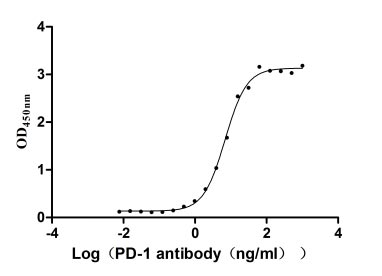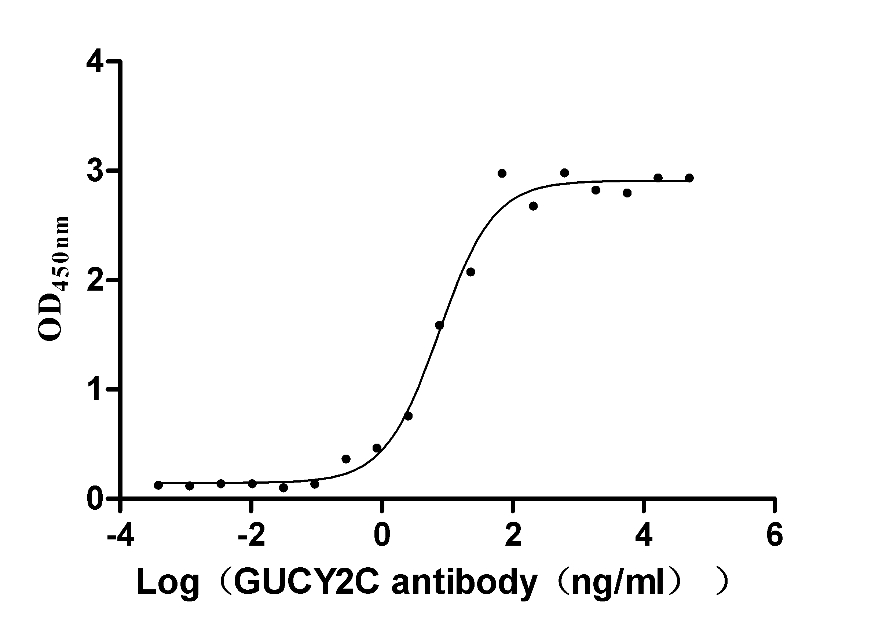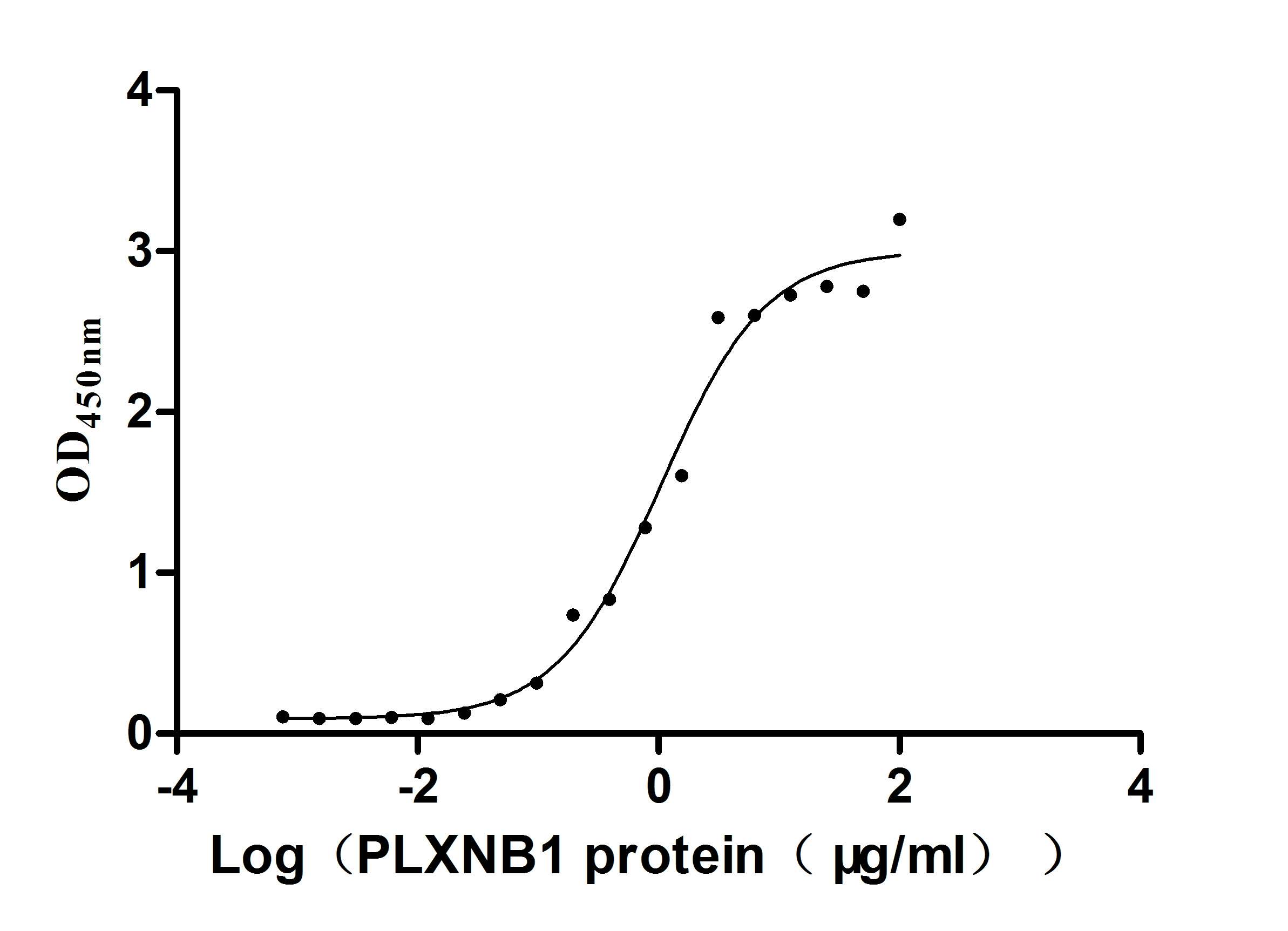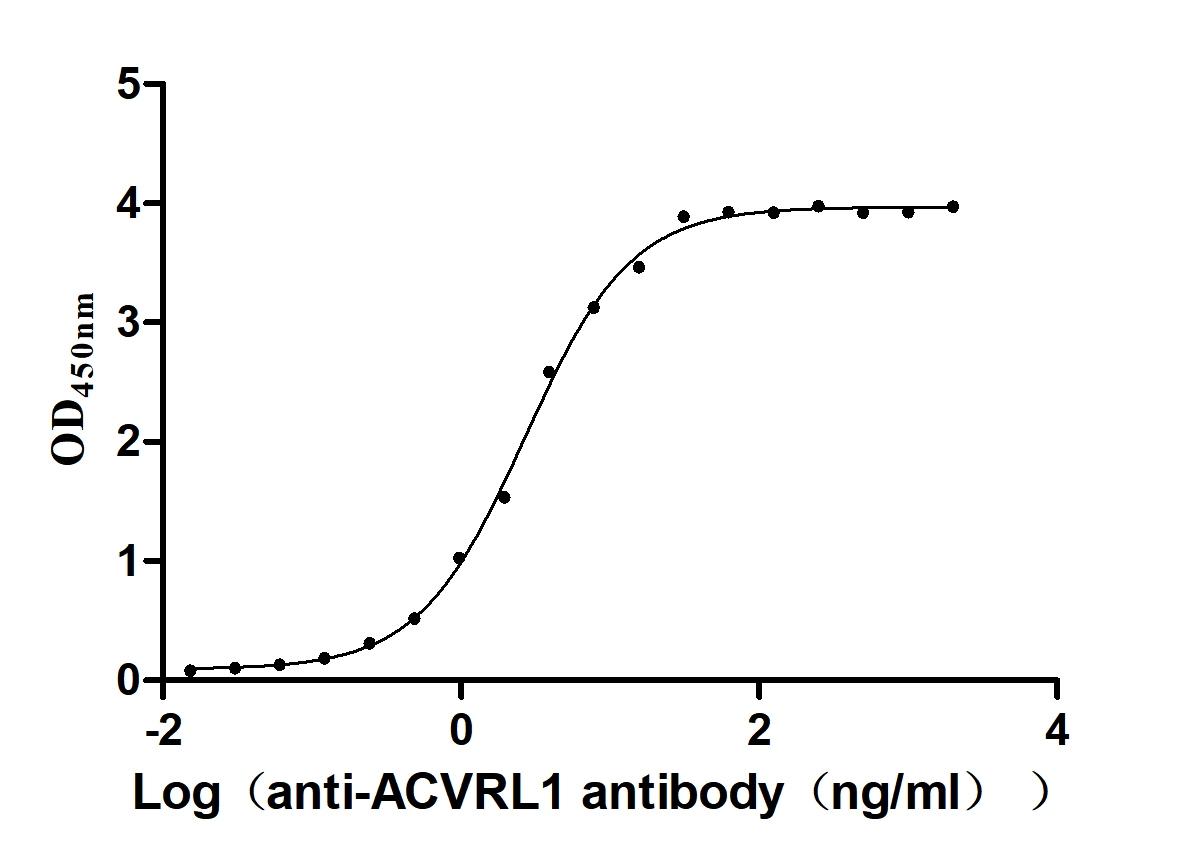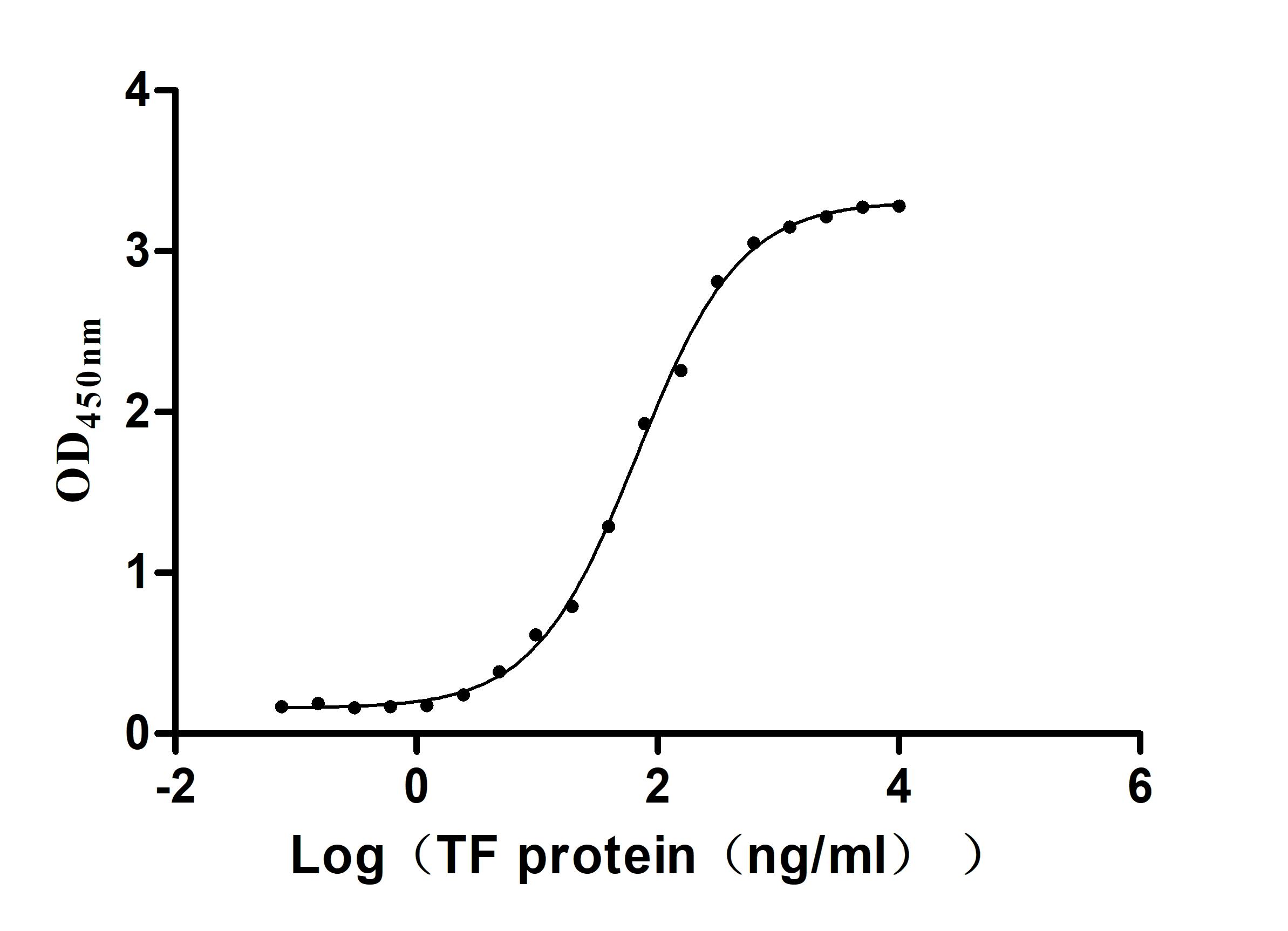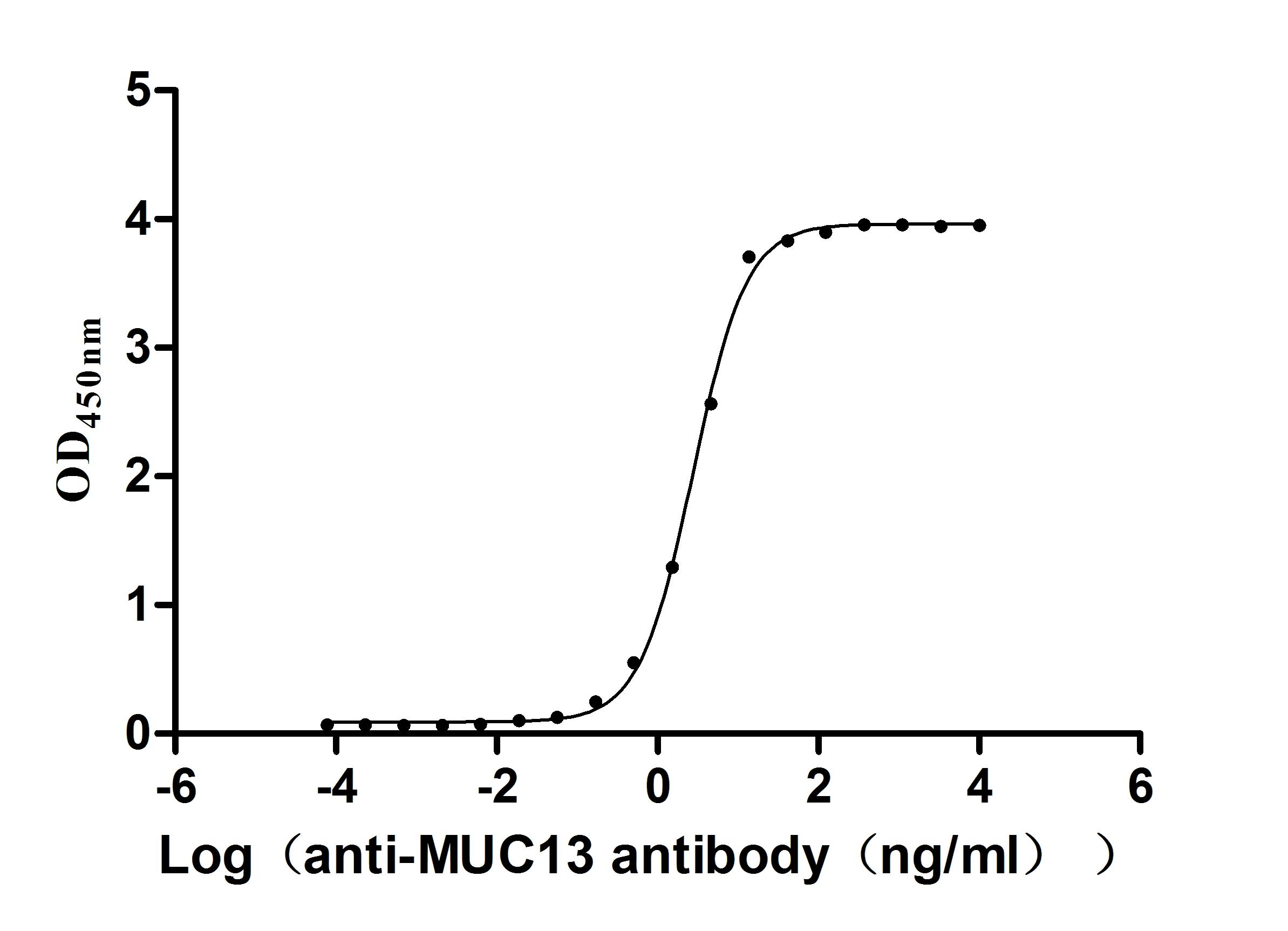Recombinant Human Malcavernin (CCM2)
-
中文名稱:Recombinant Human Malcavernin(CCM2)
-
貨號:CSB-YP866275HU
-
說明書:
-
規(guī)格:
-
來源:Yeast
-
其他:
-
中文名稱:Recombinant Human Malcavernin(CCM2)
-
貨號:CSB-EP866275HU
-
說明書:
-
規(guī)格:
-
來源:E.coli
-
其他:
-
中文名稱:Recombinant Human Malcavernin(CCM2)
-
貨號:CSB-EP866275HU-B
-
說明書:
-
規(guī)格:
-
來源:E.coli
-
共軛:Avi-tag Biotinylated
E. coli biotin ligase (BirA) is highly specific in covalently attaching biotin to the 15 amino acid AviTag peptide. This recombinant protein was biotinylated in vivo by AviTag-BirA technology, which method is BriA catalyzes amide linkage between the biotin and the specific lysine of the AviTag.
-
其他:
-
中文名稱:Recombinant Human Malcavernin(CCM2)
-
貨號:CSB-BP866275HU
-
說明書:
-
規(guī)格:
-
來源:Baculovirus
-
其他:
產(chǎn)品詳情
-
純度:>85% (SDS-PAGE)
-
基因名:CCM2
-
Uniprot No.:
-
別名:C7orf22; Ccm2; CCM2 gene; CCM2_HUMAN; Cerebral cavernous malformation 2; Cerebral cavernous malformations 2 protein; Chromosome 7 open reading frame 22; Malcavernin; MGC4067; MGC4607; MGC74868; OSM; Osmosensing scaffold for MEKK3; OTTHUMP00000159554; OTTHUMP00000214270; OTTHUMP00000214271; OTTHUMP00000214273; PP10187
-
種屬:Homo sapiens (Human)
-
蛋白長度:full length protein
-
表達(dá)區(qū)域:1-444
-
氨基酸序列MEEEGKKGKK PGIVSPFKRV FLKGEKSRDK KAHEKVTERR PLHTVVLSLP ERVEPDRLLS DYIEKEVKYL GQLTSIPGYL NPSSRTEILH FIDNAKRAHQ LPGHLTQEHD AVLSLSAYNV KLAWRDGEDI ILRVPIHDIA AVSYVRDDAA HLVVLKTAQD PGISPSQSLC AESSRGLSAG SLSESAVGPV EACCLVILAA ESKVAAEELC CLLGQVFQVV YTESTIDFLD RAIFDGASTP THHLSLHSDD SSTKVDIKET YEVEASTFCF PESVDVGGAS PHSKTISESE LSASATELLQ DYMLTLRTKL SSQEIQQFAA LLHEYRNGAS IHEFCINLRQ LYGDSRKFLL LGLRPFIPEK DSQHFENFLE TIGVKDGRGI ITDSFGRHRR ALSTTSSSTT NGNRATGSSD DRSAPSEGDE WDRMISDISS DIEALGCSMD QDSA
-
蛋白標(biāo)簽:Tag?type?will?be?determined?during?the?manufacturing?process.
The tag type will be determined during production process. If you have specified tag type, please tell us and we will develop the specified tag preferentially. -
產(chǎn)品提供形式:Lyophilized powder Warning: in_array() expects parameter 2 to be array, null given in /www/web/cusabio_cn/public_html/caches/caches_template/default/content/show_product_protein.php on line 662
Note: We will preferentially ship the format that we have in stock, however, if you have any special requirement for the format, please remark your requirement when placing the order, we will prepare according to your demand. -
復(fù)溶:We recommend that this vial be briefly centrifuged prior to opening to bring the contents to the bottom. Please reconstitute protein in deionized sterile water to a concentration of 0.1-1.0 mg/mL.We recommend to add 5-50% of glycerol (final concentration) and aliquot for long-term storage at -20℃/-80℃. Our default final concentration of glycerol is 50%. Customers could use it as reference.
-
儲(chǔ)存條件:Store at -20°C/-80°C upon receipt, aliquoting is necessary for mutiple use. Avoid repeated freeze-thaw cycles.
-
保質(zhì)期:The shelf life is related to many factors, storage state, buffer ingredients, storage temperature and the stability of the protein itself.
Generally, the shelf life of liquid form is 6 months at -20°C/-80°C. The shelf life of lyophilized form is 12 months at -20°C/-80°C. -
貨期:Delivery time may differ from different purchasing way or location, please kindly consult your local distributors for specific delivery time.Note: All of our proteins are default shipped with normal blue ice packs, if you request to ship with dry ice, please communicate with us in advance and extra fees will be charged.
-
注意事項(xiàng):Repeated freezing and thawing is not recommended. Store working aliquots at 4°C for up to one week.
-
Datasheet :Please contact us to get it.
相關(guān)產(chǎn)品
靶點(diǎn)詳情
-
功能:Component of the CCM signaling pathway which is a crucial regulator of heart and vessel formation and integrity. May act through the stabilization of endothelial cell junctions. May function as a scaffold protein for MAP2K3-MAP3K3 signaling. Seems to play a major role in the modulation of MAP3K3-dependent p38 activation induced by hyperosmotic shock.
-
基因功能參考文獻(xiàn):
- Case-control study to investigate the possible association of others polymorphisms (c.485+65 C/G, c.989+63 C/G, c.1980 A/G in CCM1 gene, c.472+127 C/T in CCM2 and c.150 G/A in CCM3) with cerebral cavernous malformations. The five polymorphisms were characterized in 64 sporadic patients and in 90 healthy controls by ASO-PCR. Results suggest that some polymorphisms in CCM genes could play an important role in the disease. PMID: 28870584
- A novel missense mutation in CCM2 were detected in cerebral cavernous malformations patient. Several CCM2 gene polymorphisms in sporadic CCM patients were reported. PMID: 28000143
- Data suggest that signaling via ANP/ANPR (atrial natriuretic factor/ANP receptor) in vascular endothelial cells activates PAK4 (p21-activated kinase 4) and CCM2 (cerebral cavernous malformation 2 protein), resulting in phosphorylation of MLC (myosin light chain), cytoskeletal reorganization, and cell spreading; kinase homology domain of ANPRA (guanylyl cyclase-A) activates downstream targets of ANP/ANPR signaling. PMID: 28432261
- Studies suggest that the 3 proteins of the Cerebral Cavernous Malformations (CCM) complex KRIT1/CCM1, CCM2/malcavernin and CCM3/PDCD10 not only require one another for reciprocal stabilization, but also act as a platform for signal transduction. PMID: 26356566
- a new mutation in MGC4607/CCM2 was identified in several family members with spinal and cutaneous angiomas. PMID: 25869611
- both CCM2 and CCM3 are required for normal endothelial cell network formation. PMID: 25825518
- Data find that several disease-associated missense mutations in CCM2 have the potential to interrupt the KRIT1-CCM2 interaction by destabilizing the CCM2 PTB domain and that a KRIT1 mutation also disrupts this interaction PMID: 25525273
- Prevalence, frequency and characterization of CCM1, CCM2 and CCM3 variants in cerebral cavernous malformation Spanish patients. PMID: 24466005
- Cerebral cavernous malformation(CCM)s develop because of loss of heart of glass (HEG)-independent CCM2 signaling in murine transgenic endothelium of central nervous system after birth. PMID: 24643410
- DNA sequencing and deletion/duplication testing of the CCM1, CCM2, and CCM3 genes in the proband revealed a CCM1 c.601CNG mutation. PMID: 24007869
- The identification of other four new mutations in 40 sporadic patients with either single or multiple cerebral cavernous malformations, is reported. PMID: 24058906
- CCM2 mutations are associated with cerebral cavernous malformation in some Japanese patients. PMID: 23485406
- A previously undescribed deletion mutation in CCM2 gene exon 5 is described in an Italian family with multiple cerebral cavernous malformations and epilepsy. PMID: 23000020
- Here we describe the molecular characterization of an Italian child, a symptomatic patient, affected by multiple cerebral cavernous malformations, without a family history of the disease and harbouring a new MGC4607 gene mutation. PMID: 22415356
- structural characterization of CCM2 PMID: 23266514
- Down-modulation of STK25, but not STK24, rescued medulloblastoma cells from NGF-induced TrkA-dependent cell death, suggesting that STK25 is part of the death-signaling pathway initiated by TrkA and CCM2. PMID: 22782892
- Diffraction data were collected from native and selenomethionine-substituted crystals of CCM2-Ct to resolutions of 2.9 and 2.7 A, respectively PMID: 22684070
- The possible association of CCM2 polymorphisms with sporadic cerebral cavernous malformation, was investigated. PMID: 22378217
- Data suggest that the two base pair change in CCM2 has the potential to simplify genetic testing for cerebral cavernous malformation in the Ashkenazi Jewish population. PMID: 21543988
- This study shows for the first time that CCM2 is present in the developing human neocortex. PMID: 21569831
- Among familial cases of Cerebral cavernous malformations 67% had a mutation in CCM1, 5.5% in CCM2, and 5.5% in CCM3 PMID: 21029238
- Genetic variations could interfere with the proper CCM1/CCM2/CCM3 protein complex thus explaining the observed clinical variability in cerebral cavernous malformations in a large family. PMID: 20419355
- The KRIT1-CCM2 interaction regulates endothelial junctional stability and vascular barrier function by suppressing activation of the RhoA/ROCK signaling pathway. This pathway is dysregulated in human cerebral cavernous malformation endothelium. PMID: 20308363
- MGC4607 encodes a protein with a phosphotyrosine-binding domain that may be part of the complex pathway of integrin signaling that, when perturbed, causes abnormal vascular morphogenesis in the brain, leading to CCM formation. PMID: 14624391
- KRIT1, Malcavernin, and PDCD10 are differentially expressed in cerebral venous malformations and cerebral cavernous malformations PMID: 16239636
- CCM1 and CCM2 have similar expression patterns during development and are involved in the same pathway important for central nervous system vascular development PMID: 16373645
- Five percent of patients with familial cerebral cavernomas have retinal cavernomas. These lesions are clinically asymptomatic. They can be associated with any of the 3 cerebral cavernous malformation genes. PMID: 16769843
- The prevalence of CCM2 is much higher than previously predicted, nearly equal to CCM1, and that large genomic deletions in the CCM2 gene represent a major component of this disease. PMID: 17160895
- Through its NPXY motifs, Krit1 interacts with malcavernin and may shuttle it through the nucleus via its nuclear localization signal and nuclear export signals, thereby regulating its cellular function. PMID: 17290187
- In a CCM2 affected family, we report a novel causative mutation, (54_55delAC) in exon 2 of the MGC4607 gene, that produces a truncated protein containing only 22 amino acids PMID: 17440989
- CCM3 (PDCD10) coprecipitates and colocalizes with CCM2. CCM3 directly binds to serine/threonine kinase 25 (STK25, YSK1, SOK1) and the phosphatase domain of Fas-associated phosphatase-1 (FAP-1, PTPN13, PTP-Bas, PTP-BL). PMID: 17657516
- data are in agreement with a loss-of-function mechanism for CCM mutations, uncover an N-terminal CCM2 domain required for CCM1 binding, and demonstrate full-length CCM2 as the essential core protein in the CCM1/CCM2/CCM3 complex PMID: 18300272
- Biallelic germline and somatic mutations were identified in CCM1, CCM2 or PDCD10 from all forms of inherited cerebral cavernous malformations. PMID: 19088123
- Complete localized loss of either CCM1, CCM2 or CCM3 protein expression depend on the inherited mutation in cerebral cavernous malformations. PMID: 19088124
- CCM2 regulates endothelial cytoskeletal architecture, cell-to-cell interactions and lumen formation. Heterozygosity at Ccm2, a genotype equivalent to that in human CCM, results in impaired endothelial barrier function PMID: 19151728
- Methods Multiplex Ligation-dependent Probe Amplification analysis integrates the consecutive sequence analysis of the 3 genes (Krit1/CCM1, MGC4607/CCM2, and PDCD10/CCM3) known to be responsible for cerebral cavernous malformation lesions. PMID: 19199464
- Aberrant splicing due to a silent nucleotide change in CCM2 gene in a family with cerebral cavernous malformation PMID: 19475721
- CCM2 protein contributes to vasculogenesis and angiogenesis in human placenta. PMID: 19688696
- CCM2 is a key mediator of TrkA-dependent cell death in pediatric neuroblastic tumors PMID: 19755102
顯示更多
收起更多
-
相關(guān)疾病:Cerebral cavernous malformations 2 (CCM2)
-
亞細(xì)胞定位:Cytoplasm.
-
蛋白家族:CCM2 family
-
數(shù)據(jù)庫鏈接:
Most popular with customers
-
Recombinant Human Programmed cell death protein 1 (PDCD1), partial (Active)
Express system: Mammalian cell
Species: Homo sapiens (Human)
-
Recombinant Human Heat-stable enterotoxin receptor (GUCY2C), partial (Active)
Express system: Mammalian cell
Species: Homo sapiens (Human)
-
Recombinant Human Plexin-B1 (PLXNB1), partial (Active)
Express system: Mammalian cell
Species: Homo sapiens (Human)
-
Recombinant Human G-protein coupled receptor family C group 5 member D (GPRC5D)-VLPs (Active)
Express system: Mammalian cell
Species: Homo sapiens (Human)
-
Recombinant Human Interleukin-2 receptor subunit alpha (IL2RA), partial (Active)
Express system: Mammalian cell
Species: Homo sapiens (Human)
-
Recombinant Human Serine/threonine-protein kinase receptor R3 (ACVRL1), partial (Active)
Express system: Baculovirus
Species: Homo sapiens (Human)
-
Recombinant Human Serotransferrin(TF) (Active)
Express system: Mammalian cell
Species: Homo sapiens (Human)
-
Recombinant Human Mucin-13(MUC13),partial (Active)
Express system: yeast
Species: Homo sapiens (Human)


